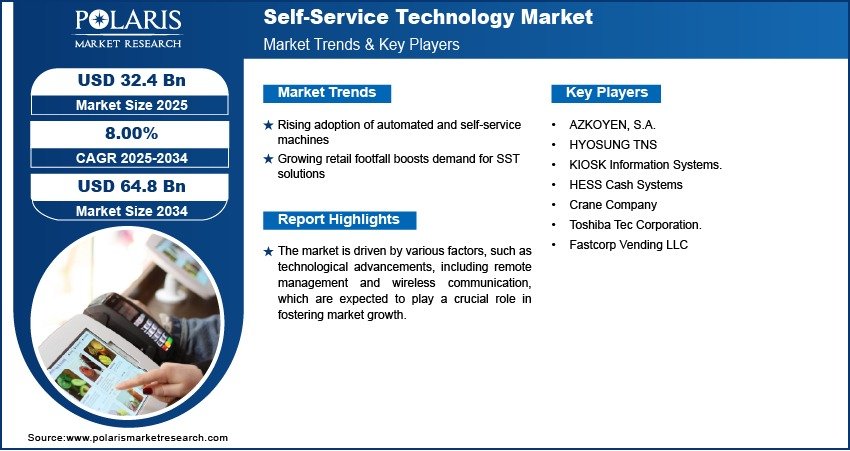Self-Service Technology Market Size Projected to Reach USD 64.8 Billion by 2034 | Growing at a CAGR of 8.00%

key market Trends & Insights for the Self-Service Technology Market
Rising Adoption of Contactless Solutions
-
Surge in demand for kiosks, vending machines, and self-checkout due to hygiene and convenience.
Integration of AI & Analytics
-
Smart technologies enabling personalization and predictive maintenance.
Growth in Retail & Hospitality
-
Retailers and hotels investing heavily to improve customer experience and reduce labor costs.
Mobile & Cloud-Based Interfaces
-
Mobile payments and cloud-managed terminals gaining traction.
Expansion into Emerging Economies
-
Rapid deployment across Asia-Pacific and Latin America as infrastructure improves.
Focus on Security & Compliance
-
Biometric authentication and secure payment systems becoming standard.
Market Size & Forecast
Market size value in 2025 – USD 32.4 billion
Revenue forecast in 2034 – USD 64.8 billion
CAGR – 8.00% from 2025 – 2034






